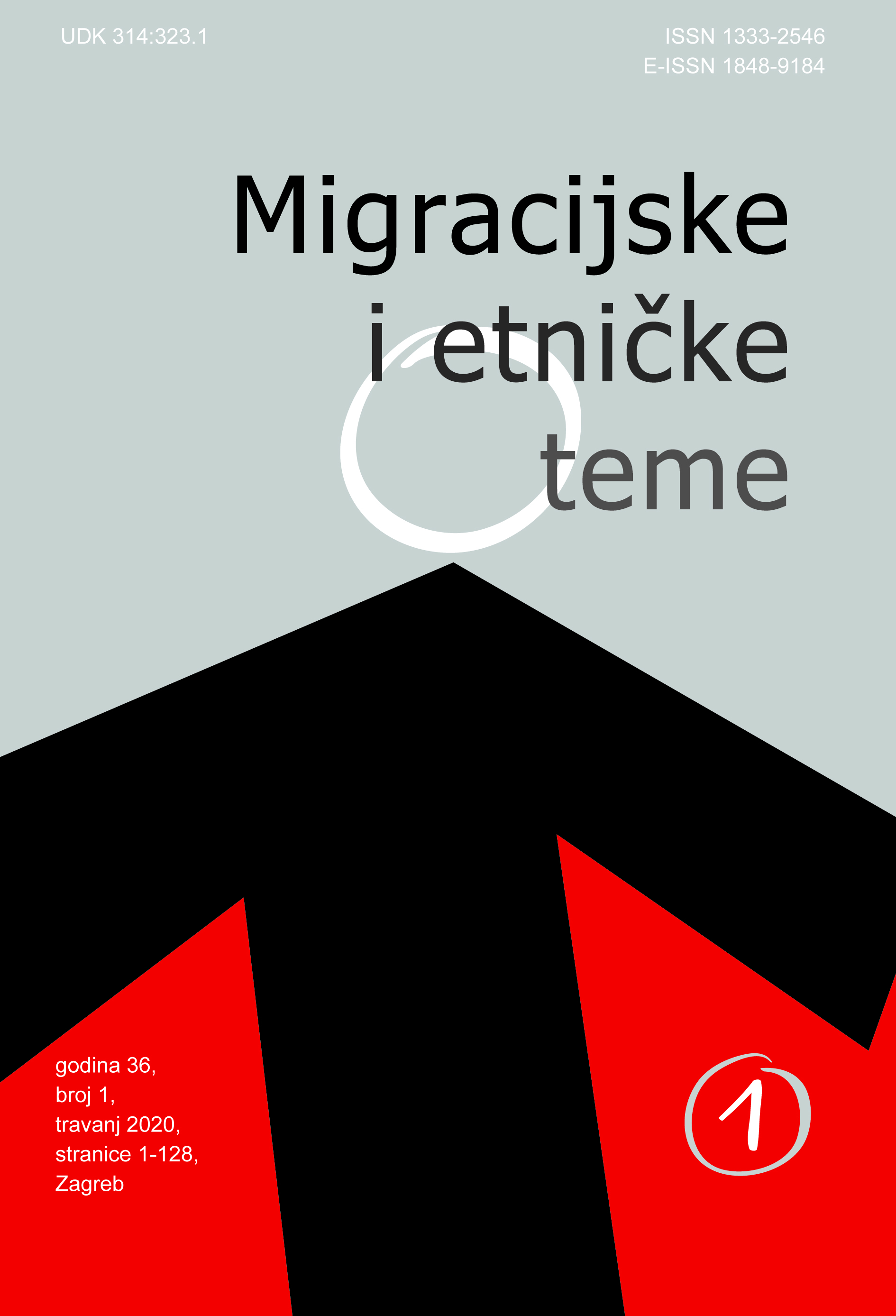Spatial Visualisation of Ethnic Structure Changes in the Apuseni Mountains (Romania) 1880–2011
Spatial Visualisation of Ethnic Structure Changes in the Apuseni Mountains (Romania) 1880–2011
Author(s): Mădălin-Sebastian Lung, Gabriela-Alina MuresanSubject(s): Geography, Regional studies, Regional Geography, Cultural Anthropology / Ethnology
Published by: Institut za migracije i narodnosti
Keywords: Apuseni Mountains; ethnic structure; Romania;
Summary/Abstract: This study aims to present a comparative analysis of the ethnic structure of the population in the Apuseni Mountains (in Romania) during three censuses: in 1880, 1930, and 2011. It emphasises ethnicity continuities and discontinuities, as well as the historical moments that left their mark on that evolution. Statistical data were processed, resulting in the tables showing the ethnic structure of the Apuseni, with absolute as well as relative (percentage) values for each ethnic group. Data were also processed with the aid of ArcGIS 10.3, generating maps of the territorial distribution of the ethnic groups for each administrative-territorial unit. The results show that Romanians maintained their continuity in the mountain area, while other ethnicities changed significantly in terms of numbers and percentages of the total population. The Jewish community was persecuted during the Second World War, finding themselves on the brink of disappearance at the 2011 census. German communities suffered from the socialist policies of deportation to the Soviet Union and other states. Slovaks, deeply affected by industrial restructuring, began to emigrate after the fall of communism in 1989. The most dynamic ethnic group are the Roma, who, according to the censuses, continuously increased in number and percentage.
Journal: Migracijske i etničke teme
- Issue Year: 2020
- Issue No: 1
- Page Range: 7-28
- Page Count: 22
- Language: English

